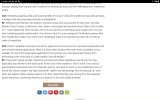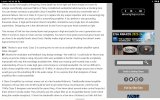What we see with competnt designs is that grass is well below the level of audiblity.
So - who cares if we miss some of the ultrasonic harmonics, if they don't create any audible problem?
And to be able to sniff out amp distortion (if it is not driven into clipping) you need ultra-low distortion speakers and a lot of training in detecting distortion. Of which I have none, luckily for my wallet, I'm just saying.


There's a vocal minority who seem to have philosophical objections to Class D. Maybe it's because it commodifies high power and high performance? Maybe because it obsoletes their expertise on linear A/AB amps? But I've certainly had problems verifying their dark views (and sometimes measurements) on my lab bench and in my listening room. I have yet another high power moderate cost Class D amp on my workbench right now which outperforms the AP analyzer regardless of the load I throw at it. And it's far from the first. My challenge is finding something new to say for yet another stellar performer- it seems to be the norm now, not the exception.
Now that's more like it. It's just a matter of measuring at different bandwidths and then seeing how it looks with IMD, THD in the higher frequencies, within the audible range. Preferably comparative measurements for higher order harmonics.
When I say It's just a matter, I mean for those who have measuring equipment and the knowledge, which you seem to have.

If people knew less about the Class D theory of operation they might not have so many objections (a little knowledge is a dangerous thing). Much like the advent of digital music which found many critics in the early days despite the fact that studios were using the technology widely up to a decade earlier.
I like class D and so do a lot of people on that other forum. There may be a greater skepticism towards cheap load-dependent class D amps there than here at ASR, but good Hypex, for example, is appreciated and used by many on that forum.

There has been a development of class D amps in recent decades, which you are clearly aware of, but I still mention it for others who read this thread. Those who are notoriously skeptical of class D may have missed this development, what do I know?

Gone are the days when it was said that class D amps are only good for subwoofers. Well, maybe there are those who say that now, but missed that this is not the case nowadays.
Bruno Putzeys talks about the class D development in this interview:

Class D is also thoroughly unforgiving. Every detail has to be right and there simply isn’t room to indulge scientifically unproven flights of fancy. Established audiophile habits become a blocking item. You can always construct a passable Class A amplifier that tiptoes around any conceivable...

www.soundandvision.com



